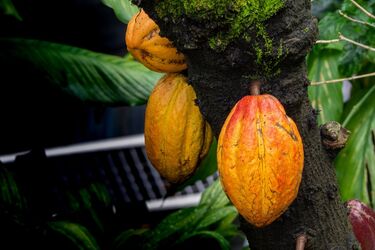"Food of the gods": archaeologists discover a new historical fact about chocolate

A new study published in the journal Scientific Reports has shown that the cacao tree, from which cocoa beans grow, probably began its journey from the Amazon 5000 years ago. It spread to other regions through human migration and trade routes.
"Humans have long transported and traded plants, contributing to the evolution of domesticated crops," the study authors write. The cacao tree is native to the neotropical part of South America. However, very little is known about its domestication and use in these regions, Newsweek reports.
Read also: Treasure trove of more than 30,000 unique artifacts found in Sweden
The team of researchers, led by Claire Lano, carefully studied 352 fragments of ceramic pots ranging in age from 5900 to 400 years old, found in Ecuador, Colombia, Peru, Mexico, Belize, and Panama.
By analyzing the DNA of the ancient cacao, they identified three genetic strains. This allowed them to investigate how these strains were bred and spread between different cultures. It turned out that cocoa beans were much more widespread between different cultures than previously thought.
Today, chocolate is one of the most popular products in the world. And the cocoa tree from which it is made is still one of the most important crops on the planet. Its scientific name, Theobroma cacao, literally translates to "food of the gods".
However, the cocoa tree is threatened by numerous dangers, such as disease and climate change. Researchers say that knowledge of its genetic history and diversity will help them address these challenges.
The new findings show that after being domesticated in the Amazon 5000 years ago, the cacao tree quickly spread along the Pacific coast. Until this study, the details of its distribution, as well as its use in different cultures, remained unknown.
The findings also provide new insight into the different varieties of the cacao tree and how they have diversified.
There are currently 11 different varieties of cocoa tree. In the study, the researchers found "a high level of genetic diversity among ancient strains," indicating that different populations have interbred.
"We observed that as early as the Middle Holocene in South America, intense genetic mixing between geographically distant cocoa populations occurred, which stimulated the adaptation of T. cacao to new conditions," the authors of the study write.
The Middle Holocene covers the period from 4000 to 6000 years ago.
"This complex history of cocoa domestication formed the basis of modern cocoa tree populations, and understanding it can help us better manage their genetic resources," the authors say.
This study is an important step in understanding the origin and evolution of one of the world's favorite foods.
As a reminder, archaeologists in Turkey have found the oldest bread in the world.
If you want to get the latest news about the war and events in Ukraine, subscribe to our Telegram channel!
